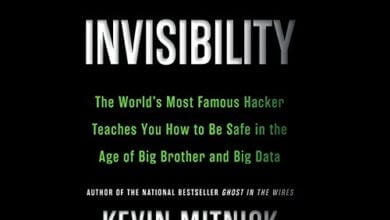The Browser Hacker's Handbook
by Wade Alcorn, Christian Frichot, and Michele Orru

Book Review Structure for The Browser Hacker’s Handbook
In the ever-expanding universe of cybersecurity and bug bounty hunting, mastering the art of browser security stands as a critical frontier for enthusiasts and professionals alike. The Browser Hacker’s Handbook, authored by Wade Alcorn, Christian Frichot, and Michele Orru, emerges as an essential guide for anyone eager to delve into the complexities and intricacies of exploiting browsers. With a likely rating of 4.4/5, this handbook has established itself as a revered resource within the cybersecurity community, underscoring its credibility and the high regard in which it’s held by experts and beginners alike.
The collective expertise of Alcorn, Frichot, and Orru brings forth a comprehensive exploration of browser-based vulnerabilities, equipping readers with the knowledge to identify, exploit, and mitigate web application weaknesses. This book’s significance lies in its thorough examination of cross-site scripting (XSS), cross-site request forgery (CSRF), and a myriad of other web vulnerabilities and its practical approach to tackling these issues head-on. For bug bounty hunters focusing on browser security, “The Browser Hacker’s Handbook” is an invaluable ally in their quest to safeguard the web.
About the Authors
Wade Alcorn, Christian Frichot, and Michele Orru are distinguished figures in the field of cybersecurity. Each brings a unique set of skills and experiences that culminate in the authoritative voice of The Browser Hacker’s Handbook. Their backgrounds are as diverse as they are impressive, solidifying the book’s foundation with real-world insights and expertise.
Wade Alcorn is renowned for discovering the BeEF (Browser Exploitation Framework), a pivotal tool in browser security testing and exploitation. His work has significantly contributed to understanding and developing client-side attack vectors, making him a respected figure in cybersecurity circles.
Christian Frichot, with his extensive experience in information security, particularly in vulnerability assessment and management, adds a strategic layer to the book. His ability to demystify complex security concepts for a broader audience without sacrificing depth or technical rigor is instrumental in the handbook’s accessibility and practicality.
Michele Orru, also known as the maintainer of the BeEF project alongside Alcorn, brings a wealth of knowledge in browser exploitation techniques. His contributions to the BeEF project and his expertise in web security provide readers with cutting-edge information on harnessing and mitigating browser vulnerabilities.
Alcorn, Frichot, and Orru combine their expertise to create a comprehensive guide that stands as a testament to their authority in the field. Their collective experiences enrich the content of The Browser Hacker’s Handbook and reinforce its credibility as an indispensable resource for anyone serious about mastering browser security and exploitation.
Overview of the Book
The Browser Hacker’s Handbook takes a deep dive into the critical and complex domain of browser security, unraveling the myriad ways through which web applications can be compromised. At the heart of this exploration lies a comprehensive analysis of various web vulnerabilities, with particular emphasis on cross-site scripting (XSS), cross-site request forgery (CSRF), and a host of other threats that jeopardize browser integrity and user safety.
This handbook meticulously details the mechanisms behind each type of vulnerability, providing readers with a profound understanding of how they can be exploited. From the nuances of XSS, which allows attackers to inject malicious scripts into web pages viewed by other users, to the intricacies of CSRF, which tricks the browser into executing unwanted actions in an application where the user is logged in, the book leaves no stone unturned.
What sets The Browser Hacker’s Handbook apart is its thorough coverage of known vulnerabilities and its forward-looking approach. The authors delve into emerging threats and the latest browser security features, offering insights into how the landscape of web vulnerabilities is evolving and how attackers adapt to these changes.
By bridging the gap between theoretical knowledge and practical application, the book serves as an indispensable guide for anyone looking to understand and exploit browsers. Its depth and breadth of knowledge make it a crucial resource for bug bounty hunters, cybersecurity professionals, and anyone interested in the security of web applications. Through its pages, readers are equipped with the tools and techniques necessary to identify, exploit, and mitigate vulnerabilities, ultimately contributing to the advancement of browser security.
Key Highlights
The Browser Hacker’s Handbook is replete with chapters and sections that are not just informative but transformative for readers, especially those specializing in browser-based vulnerabilities. A few key highlights underscore the book’s invaluable contribution to the field of cybersecurity and bug bounty hunting:
- In-Depth Exploration of Common Vulnerabilities: One of the handbook’s standout features is its detailed exploration of common vulnerabilities such as XSS and CSRF. These sections go beyond surface-level explanations, offering readers a granular understanding of how these vulnerabilities work, how they can be detected, and the potential they hold for exploitation.
- Techniques for Identifying and Exploiting Weaknesses: The book shines in its practical approach, presenting an array of techniques and tools for identifying and exploiting weaknesses in web applications. This includes step-by-step guides on setting up testing environments, crafting payloads, and executing attacks, all tailored to the nuances of browser security. This knowledge is gold for bug bounty hunters, equipping them with the skills to uncover and report critical vulnerabilities.
- Strategies for Securing Web Applications: While focusing on exploitation, the authors do not neglect the importance of securing web applications. Several sections are dedicated to discussing defensive strategies, offering readers insights into how web applications can be fortified against the attacks detailed earlier in the book. This dual perspective makes for a well-rounded understanding of browser security and encourages a more ethical approach to bug bounty hunting.
- Case Studies and Real-World Examples: Including case studies and real-world examples brings the theoretical aspects of browser exploitation to life. These narratives illustrate the practical application of the book’s teachings and provide context to the vulnerabilities discussed, showing how they have been exploited and their impact on web security.
For bug bounty hunters, especially those with a keen interest in browser-based vulnerabilities, these key highlights from The Browser Hacker’s Handbook are not just learning opportunities but stepping stones to mastery. The book’s depth of content on exploiting and securing web applications makes it an essential addition to any cybersecurity enthusiast’s library.
Why It’s Recommended for Bug Bounty Hunters and Cybersecurity Specialists
The Browser Hacker’s Handbook is highly recommended for anyone involved in bug bounty hunting and cybersecurity, from eager beginners to seasoned professionals. Its utility spans the entire spectrum of expertise, offering valuable insights and techniques that cater to all levels of proficiency in the field.
For Beginners: This handbook is an exceptional starting point for those new to cybersecurity or browser security. It lays a solid foundation, introducing fundamental concepts and vulnerabilities in an accessible and engaging manner. Beginners will appreciate the step-by-step guides and clear explanations, which demystify the complex world of browser vulnerabilities. By starting with this book, novices can rapidly build up their knowledge and confidence, setting the stage for more advanced exploration.
For Seasoned Professionals: Even experienced bug bounty hunters and cybersecurity specialists will find the book invaluable. It delves into advanced tactics and cutting-edge vulnerabilities, reflecting the latest trends and threats in browser security. The detailed exploration of exploitation techniques and the comprehensive overview of defensive strategies provide a deep well of knowledge that can enhance the skills of even the most experienced professionals.
Practical, Hands-On Knowledge: Beyond its theoretical contributions, The Browser Hacker’s Handbook stands out for its practical, hands-on approach to learning. Readers are taught how to identify vulnerabilities and exploit them, offering a real-world application of the knowledge gained. This hands-on experience is crucial for bug bounty hunters, as it equips them with the practical skills necessary to identify and report vulnerabilities in web applications.
Applicability in Real-World Scenarios: The techniques and strategies detailed in the book have direct applicability in real-world scenarios, making it an essential tool for anyone serious about making an impact in the field of cybersecurity. Whether it’s identifying a zero-day vulnerability in a popular web browser or securing web applications against sophisticated attacks, the knowledge gained from this handbook can be directly applied to enhance the security of the digital landscape.
The Browser Hacker’s Handbook is recommended for its comprehensive coverage, accessibility to beginners, depth of knowledge for seasoned professionals, and practical applicability. It’s a resource that not only educates but also empowers readers to actively contribute to the field of cybersecurity and bug bounty hunting.
Engagement and Learning Path
Embarking on a journey through The Browser Hacker’s Handbook is more than just reading a book; it’s a significant step forward in your continuous learning path in the realm of cybersecurity. This comprehensive guide enriches your understanding of browser security and serves as a springboard for further exploration and development in the field.
Applying Knowledge in Real-World Contexts: We strongly encourage readers to apply the knowledge gained from this handbook in practical settings. Participating in bug bounty programs, especially those focusing on web applications, can be an excellent way to test your skills. These platforms offer a safe and legal environment for honing your ability to identify, exploit, and report vulnerabilities, mirroring the real-world challenges you will face as a cybersecurity professional.
Furthering Your Studies: The learning doesn’t stop with this book. Cybersecurity is an ever-evolving field, with new threats and vulnerabilities emerging constantly. To stay ahead, it’s crucial to engage with related resources that can broaden your knowledge base and keep you updated on the latest trends and techniques. Consider diving into specialized topics such as mobile security, network penetration testing, and cryptography. Online courses, webinars, and conferences are valuable resources for continuous education and networking with professionals.
Engaging with the Community: One of the most enriching aspects of the cybersecurity field is its vibrant and supportive community. Join forums, social media groups, and local meetups to share insights, ask questions, and learn from others’ experiences. This community engagement enhances your learning and opens up opportunities for collaboration and innovation.
Building a Personal Project Portfolio: Applying what you learn to personal projects or contributions to open-source security tools can further solidify your knowledge and skills. These projects serve as a practical application of your learning and a showcase of your expertise to potential employers or clients.
By approaching The Browser Hacker’s Handbook as a step in your ongoing learning journey, you position yourself for success in the dynamic and rewarding field of cybersecurity. This book is just the beginning—your path forward is rich with opportunities to learn, apply, and contribute to the security of our digital world.
Conclusion and Call to Action
In the ever-evolving landscape of cybersecurity, mastering browser security is not just an advantage; it’s a necessity. The Browser Hacker’s Handbook, authored by Wade Alcorn, Christian Frichot, and Michele Orru, stands as a beacon for those committed to excelling in bug bounty hunting and securing the web. With its deep dive into browser vulnerabilities, practical exploitation techniques, and comprehensive defense strategies, this handbook is an invaluable resource for anyone looking to enhance their skills in cybersecurity.
The journey through browser security is challenging but immensely rewarding. Whether you’re a beginner eager to learn the basics or a seasoned professional looking to deepen your expertise, this book offers the knowledge and insights necessary to navigate the complexities of the digital world. It encourages a hands-on approach to learning, urging readers to apply what they’ve learned in real-world scenarios and bug bounty programs.
We invite you, the members of the BugBustersUnited community, to delve into the pages of The Browser Hacker’s Handbook and embark on this journey of discovery and mastery. But your journey doesn’t end there. We encourage you to share your experiences, insights, or any questions you might have about the book with our community. Your contributions enrich your learning experience, strengthen our collective knowledge, and foster a vibrant environment of learning and exchange.
Let’s continue to push the boundaries of what we know about browser security, challenge ourselves with new vulnerabilities, and share our triumphs and challenges. We can build a safer digital world, one bug bounty at a time. Join the conversation, share your thoughts on The Browser Hacker’s Handbook, and let’s cultivate a community that learns, grows, and secures the web together.






